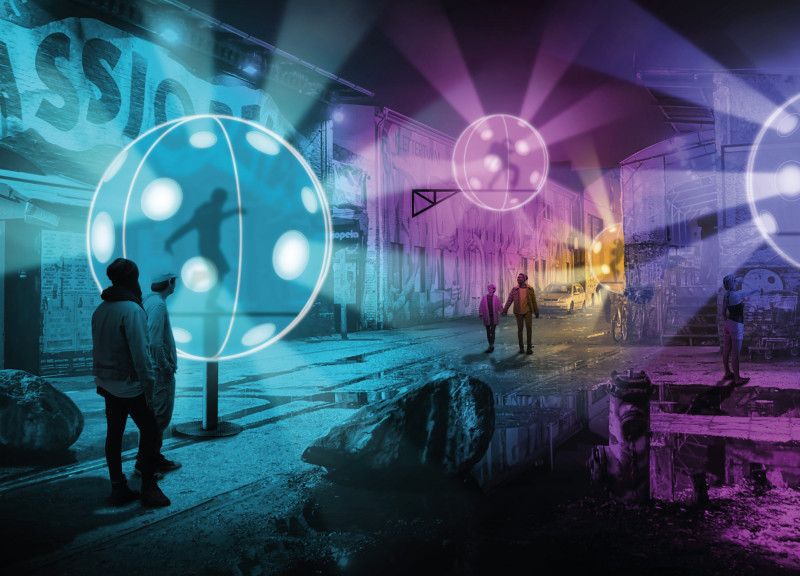5 key facts about this project
A series of light balls simulate a galaxy of planets and asteroids in an urban setting in Berlin. Each spherical structure serves as a cabin for a single dancer while adding an artistic touch to the environment. The design concept focuses on adaptability and user experience, merging performance art with architectural elements.
Installation and Access
The design allows for quick and efficient setup in various locations. Users enter the cabins using a folding ladder, making access simple. Inside, an air pump activates to inflate fabric petals, transforming the space into an engaging environment. This interaction between people and structure highlights the project's immersive nature.
Acoustic and Visual Experience
Key to the design is the integration of sound and lighting elements, which are placed at the top of each cabin. These features provide an individualized audio experience, ensuring that sounds do not disturb nearby residents. By combining visual and acoustic considerations, the design respects the urban context and allows participants to enjoy diverse music while remaining considerate of the surrounding area.
Structural Components
Each cabin consists of several essential elements that contribute to its function and appearance. A wooden platform, shaped from two semicircles, forms the base of the cabin. Six flexible polycarbonate bars connect this base to upper and lower fixation pieces, creating a sturdy structure. The air pump, discreetly located beneath the platform, is responsible for inflating the outer fabric petals, which are made of semi-translucent material featuring sealed air pockets. This combination enhances both the structural and visual characteristics of the installation.
The illuminated effect from the cabins creates a pattern of light across the urban landscape. The semi-translucent fabric allows light to diffuse outward, engaging passersby. This interplay of light and rhythm invites people to observe the visual spectacle of the cabins, showcasing a lively interaction between art, performance, and public space.



















































